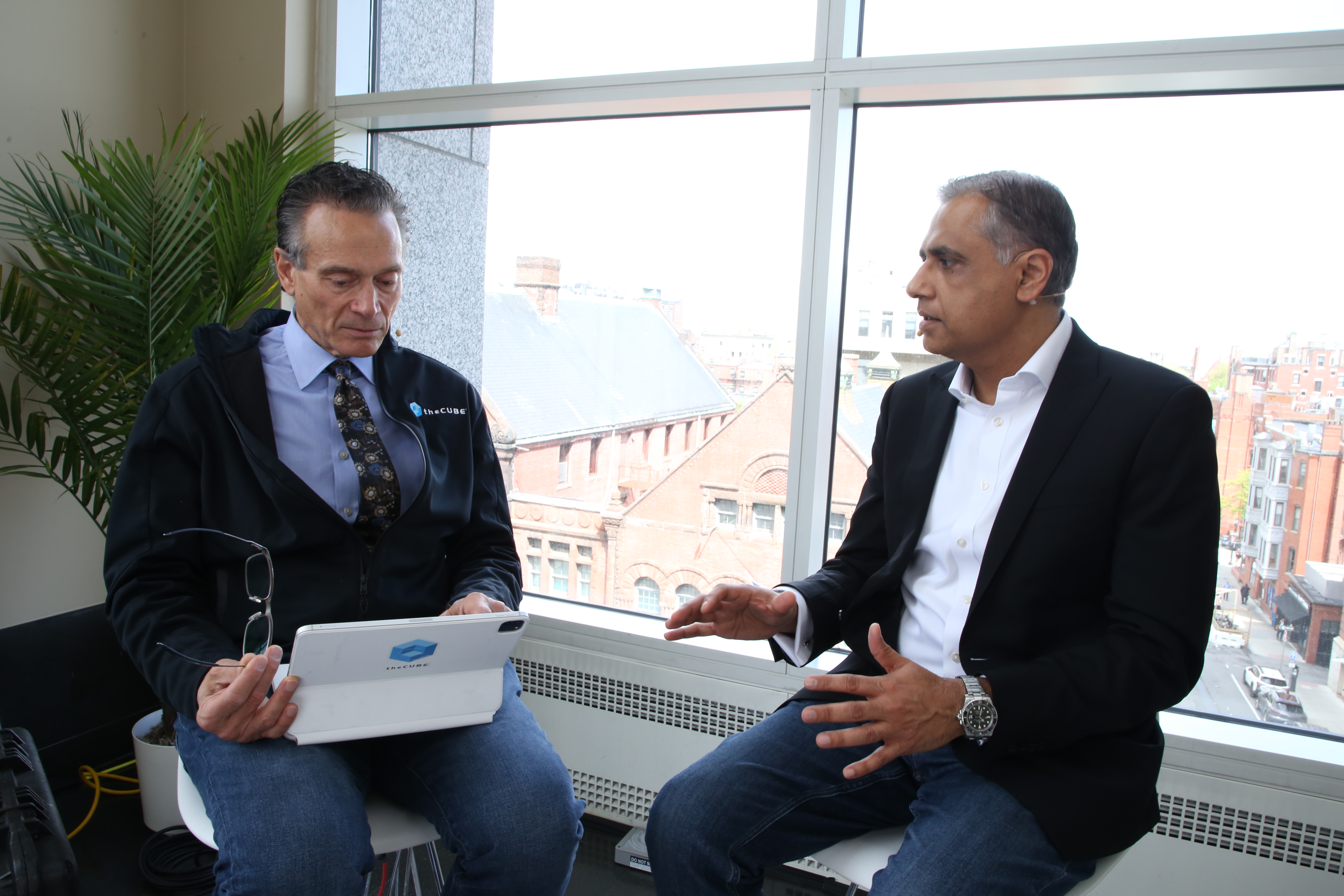 AI
AI
 AI
AI
 AI
AI
Most companies talk about gen AI as a feature. At the United Services Automobile Association, it’s becoming foundational.
USAA is applying generative artificial intelligence across core operations to pull strategic insight from unstructured data, according to Ramnik Bajaj (pictured), senior vice president, chief data, analytics and AI at USAA. Its approach prioritizes scale, trust and adaptability across the enterprise.

USAA’s Ramnik Bajaj talks with theCUBE about how IBM’s technologies are helping bridge structured and unstructured data to support AI use cases.
“There will come a time when you won’t have to file a claim,” he said. “You won’t have to call your insurance company, because the moment there’s a car accident, the car will have an AI agent that will convey all of the information about the car damage to the insurance company’s AI agent, which will then talk to the repair shop’s AI agent. All of this would happen behind the scenes without you even picking up your phone to dial a number or file something.”
Bajaj spoke with theCUBE Research’s Dave Vellante at IBM Think, during an exclusive broadcast on theCUBE, SiliconANGLE Media’s livestreaming studio. They discussed USAA’s approach to enterprise-scale gen AI, data architecture and how IBM’s technologies are helping bridge structured and unstructured data to support AI use cases. (* Disclosure below.)
Rather than treating AI as an isolated experiment, USAA is building toward an enterprise-wide model that balances innovation with governance. Centralizing its data and gen AI capabilities has helped the company increase development velocity and model reliability, according to Bajaj.
“I call it first-class data now that it is possible to do those types of analytics,” he said. “Having all of those in one place in the enterprise … really supercharges our ability to move fast and move responsibly. With a technology like gen AI, it’s important to also learn our way into the right architectural patterns that can give us not just speed to market, but also reliability [and] accuracy, preserving trust and … privacy. All of those core data management functions tie very well into that AI genre.”
USAA doesn’t greenlight AI for AI’s sake. Each proposed use case goes through a structured evaluation process to ensure it will generate measurable business value, whether through revenue, efficiency, risk reduction or improved member experience, according to Bajaj.
“Our funding for that is based on essentially an intake process where we evaluate every incoming use case against a few measures,” he said. “When we decide to use AI for a use case, we have already evaluated that it will give us value at least along one of these four dimensions, if not multiple of them.”
USAA is working closely with IBM to support its gen AI strategy, using watsonx and the Granite model family to extract structured elements from complex documents. This collaboration is key to turning claims data and underwriting materials into usable, trustworthy inputs for AI, according to Bajaj.
“We’ve run some very successful pilots with the watsonx products, and we are looking at it from two angles,” he said. “One is the problem of tackling unstructured and structured data together. Our documents, claims or any of the underwriting documents are English language documents, but … there can only be six options. To be able to call out those entities and … to use them as structured elements, that’s something IBM is providing.”
Here’s the complete video interview, part of SiliconANGLE’s and theCUBE’s coverage of IBM Think:
(* Disclosure: TheCUBE is a paid media partner for IBM Think. Neither IBM Corp., the sponsor of theCUBE’s event coverage, nor other sponsors have editorial control over content on theCUBE or SiliconANGLE.)
Support our mission to keep content open and free by engaging with theCUBE community. Join theCUBE’s Alumni Trust Network, where technology leaders connect, share intelligence and create opportunities.
Founded by tech visionaries John Furrier and Dave Vellante, SiliconANGLE Media has built a dynamic ecosystem of industry-leading digital media brands that reach 15+ million elite tech professionals. Our new proprietary theCUBE AI Video Cloud is breaking ground in audience interaction, leveraging theCUBEai.com neural network to help technology companies make data-driven decisions and stay at the forefront of industry conversations.